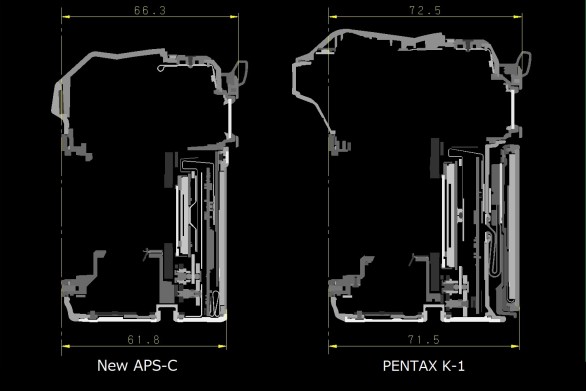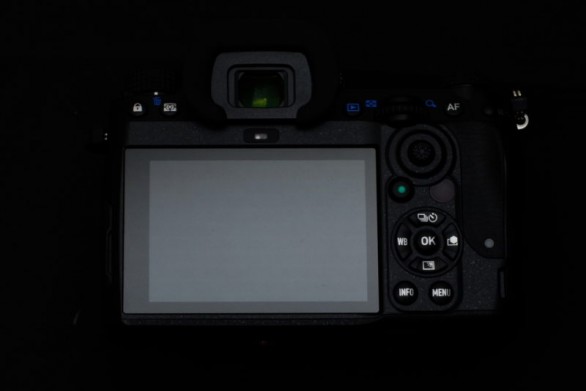Story of New APS-C
Publisert 23.09.2020 16:10
Product Stories of New APS-C Vol.3(Wakashiro)

Hi everyone! I’m Shigeru Wakashiro, in charge of the planning and development of new PENTAX digital SLR camera products.
Today, a large number of both mirrorless and SLR cameras feature an angle-adjustable LCD monitor with a vari-angle or tilt-type screen. For our new APS-C-format flagship model, currently in development, however, we decided to instead use a fixed-type LCD panel. Let me explain why we decided to do this.


We decided to prioritize the development of a compact, sturdy body because it was one of the new camera’s most important design themes. We were able to reduce the depth of the camera between the lens mount and the LCD screen by optimizing the circuit board layout and downsizing the LCD components.
We also designed a compact, sturdy body for the PENTAX K-1-series models; we equipped these with a flexible tilt-type monitor because we anticipated that they would often be used in tripod photography. Because of the sophisticated structure required to perform horizontal, vertical and diagonal tilt actions, the monitor requires the body to have the sufficient depth to incorporate a study, durable tilting mechanism. We considered other options: a tilt-type monitor with one-way tilt action featured in the PENTAX KP; and the vari-angle monitor featured in the PENTAX K-70. These options, however, also would require an increased body depth. Reducing the body depth could also impact the strength of moving components.
At PENTAX, we prioritize viewfinder shooting, so we pay the utmost attention to the appearance of the viewfinder image, and to the camera’s image-tracking performance. Since a reduced body depth makes for a greater protrusion of the viewfinder eyepiece — which provides the benefit of keeping the photographer’s nose from coming in contact with the LCD monitor — it can make viewfinder shooting more comfortable.


Because the new APS-C-format flagship camera now in development features a range of entirely new components — including the image sensor, imaging engine and accelerator unit — it assures outstanding imaging performance, not only in the high-sensitivity ranges, but at levels of sensitivity as low as ISO 100. All PENTAX SLR cameras also provide a selection of Custom Image modes to provide the fine adjustment of various parameters, making it possible for users to create images with the desired finishing touch right there at the shooting location.
In addition, incorporating an angle-adjustable screen in a compact body often makes it difficult to increase the size of the LCD monitor. That’s why PENTAX decided to equip this new camera with a fixed-type 3.2-inch monitor. This was a decision based on our goal of allowing the photographer to confirm the image’s quality and composition on a larger screen at the shooting location, while still keeping with the basic design concept of a compact, sturdy body.
Featuring a high-refraction glass pentaprism, finally perfected after many years of developmental effort, the new camera comes equipped with a remarkable optical viewfinder. While the camera has an APS-C-format SLR design, the viewfinder provides an angle of view almost equal to that of full-frame SLR models. We believe in boosting the excitement and pleasure of capturing images through the use of an optical viewfinder — we want you to directly observe, experience and feel the actual light streaming through the viewfinder. The compact, sturdy camera body design will let you devote yourself to taking photos without having to worry about carrying a heavy, cumbersome camera. This in turn will let you focus on the shooting process, and more positively interact with the subject. We want you to be impressed by the images you capture right there at the shooting location and to enjoy the entire photographic experience — not only the captured images themselves, but also the process of shooting photos. These are the reasons why we adopted these specifications in our new APS-C-format SLR flagship camera.


Shigeru Wakashiro (Product Planning)
After joining Asahi Optical Co., Ltd., PENTAX's predecessor company, he worked as an image processing researcher to develop a three-dimensional measurement system for a new business at that time. Since transferring to the camera business in 2003, Wakashiro has been in charge of product planning, mainly with lens-interchangeable cameras.
